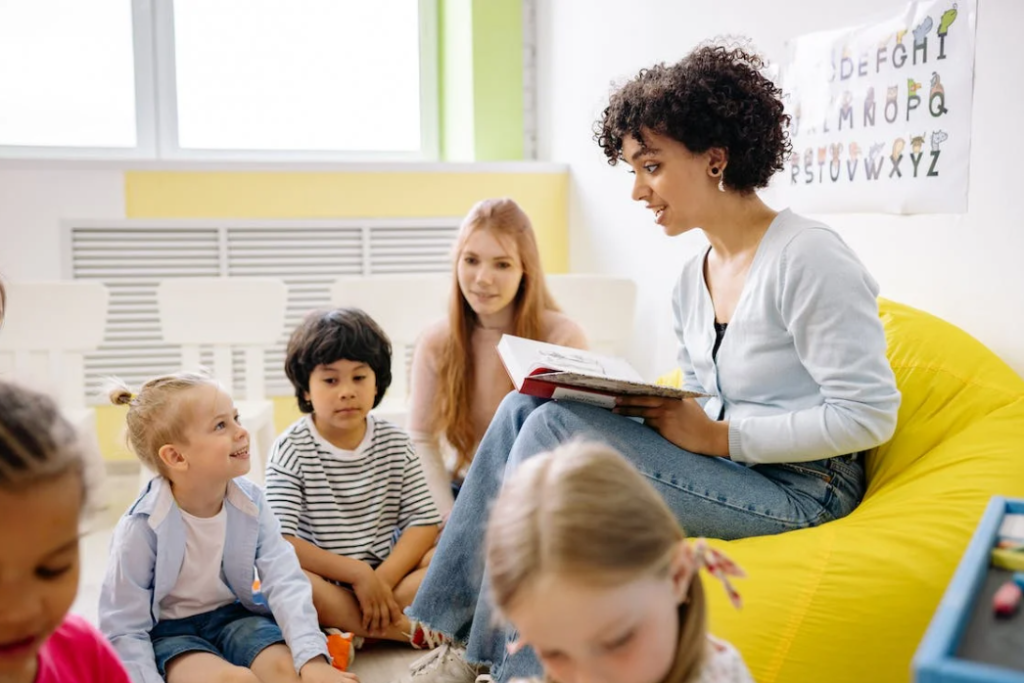How Visualization Helps Learning
Learn how visualization aids learning and how to apply it in your life to achieve your goals and success.

Selfpause Affirmation App
Download the app to get 1,000’s of affirmation meditations and everything you need to write, record and listen to your own.
Visualization can be helpful for a variety of learning situations. It helps improve reading comprehension, self-confidence, and even our ability to follow directions. Students of all ages can use this technique to enhance their learning. These activities can be conducted in small groups or as a whole class activity. You can start by working with young children by reading picture books and sharing portions of the illustrations. Young children can also create their drawings based on the text. For more advanced students, listen to a passage from a book and imagine the characters or setting.
Visualization Can Improve Reading Comprehension

Visualizing is a key skill for improving reading comprehension. Visualizing helps students build a mental picture of a story, based on their background knowledge and imagination. It also helps them focus on the subject matter. Visualizing is crucial for understanding non-fiction texts and for reading chapter books. It helps readers understand characters and settings better.
This technique should be taught to beginning readers and struggling readers. Visualizing involves using all of your senses to build mental images of stories and events. It allows you to “see” the information in a story and improves retention. It also helps improve other reading strategies. Visualization is an excellent strategy for improving reading comprehension and is a must for any struggling reader.
During reading, visualize the scenes and events that you read. Performing this activity can help you self-check your understanding and make sure you are understanding everything. For this to be effective, you need to model this process. For example, you may want to take a moment after a good description to visualize what is being said in the story. This way, students can copy the process.
Visualizing can be practiced as a whole class activity or in small groups. For example, you can read a paragraph or nursery rhyme to a class and ask them to illustrate it by drawing what they hear. For more advanced students, you can ask them to listen to a piece of a novel and illustrate the story using drawings or words.
Visualization improves reading comprehension by allowing you to visualize what you read in a new way. It helps you to understand how text is structured and helps you make connections between different texts. This technique will also help you to connect new information to previously stored information. In addition to visualizing, you can also use questions to help you develop your visualizing skills.
Visualization strategies can be used with any age group. They can also be adapted for online learning and small-group learning. As long as you maintain a high energy level, visualization exercises can be used in a variety of situations. In addition to small group activities, students can also use these strategies in large groups.
Another strategy to improve reading comprehension is making movies while reading. This technique helps you visualize words, sentences, and paragraphs in a way that helps you understand what you’re reading. You can make a movie of a story or a chapter and play it back while reading. This method also helps you recall the meaning of words while reading.
Visualization Can Improve Self-confidence

Visualization is a great way to learn a new skill. It helps you overcome your fear of the unknown, and it also makes the process go faster. The more you use visualization, the more effective your mind becomes at performing the skill. You can also visualize yourself in a social setting, or performing a physical activity.
Visualization is a powerful way to stay in the present and focus on the task at hand. It helps people believe in themselves and to feel confident in their abilities. It can also improve self-confidence and improve motivation. Visualization can also help you prepare for important events. By visualizing an important meeting, you can clear your mind and be in the moment.
To use visualization effectively, you must first identify a specific goal that you want to achieve. This goal should be something that you believe you can achieve. Then, you need to make sure that you visualize the steps necessary to accomplish that goal. For instance, if you want to deliver a speech, you need to imagine your introduction, your talking points, each slide, and every hand motion. You must also visualize that you are facing the audience while you speak.
Visualization has been used to improve mental performance by elite athletes. It has been shown to improve concentration, coordination, and motivation. It also improves sports performance. Sports scientists from the Soviet Union studied the benefits of visualization. They studied four groups of athletes. Group four received 25% physical training and 75% mental training.
Visualization is a powerful way to increase self-confidence. It works by reminding you of past achievements. Visualize yourself with admirers, friends, and future partners. Visualizing your successes helps you develop self-esteem. If you want to improve your self-confidence even further, you should visualize yourself in a positive situation.
Visualization Can Improve Your Ability to Follow Directions

One of the keys to increasing the success rate of following directions is to make the tasks more difficult. The more difficult the tasks are, the more engaged students will be and the better they will perform. For this reason, increasing the number of steps in a task will make it more difficult for students to ignore or misunderstand instructions.
The research that supports this idea suggests that mental imagery can benefit all areas of learning. Douville and Algozzine recommend integrating visualization across the curriculum. For example, Dr. Erica Warren, director of the Learning Specialist Courses, says that “visualization can improve the way we learn in a wide variety of subject areas.”
Visualization can also improve reading comprehension. Research shows that students who visualize texts have greater reading comprehension and enjoyment. In addition, it can improve memory and emotional regulation. Visualization is a powerful technique but must be taught to become automatic. There are a variety of methods that can be used to train students to learn using visualization.
Visualization is an extremely effective way to teach children about a subject matter. It helps them to better understand and remember a subject or task. This technique is also effective for children with language processing difficulties. In addition, it allows them to pause while processing information. While students are visualizing, their ability to follow directions may be affected by the language skills they use.
Visualization exercises can be done in small groups or with the entire class. Young students can listen to a book or a short story, share parts of the text, and then create their illustrations based on the text. Advanced readers can listen to an excerpt from a novel and create a visual picture or write a description of the setting.
In conclusion, visualization helps you make your goals more real. It helps your brain make more neural connections, increasing neuroplasticity. When you see yourself succeeding, you are more likely to act accordingly. You can also visualize how you would react if you fail at your goal. This visualization exercise can be a powerful tool for boosting your confidence and motivation. The first step to visualization is to choose a quiet place and focus on what you want. You should use your five senses to create the mental images that you need.
Visualization helps you achieve your goals and live the life of your dreams. The technique works by preparing your mind and body for success.
Our Top FAQ's
There are several benefits of using visualization in learning:
-
Visualization can help learners to better understand and retain complex information. By representing information visually, learners can more easily see the relationships between different pieces of information and how they fit together. This can make it easier to learn and remember new concepts.
-
Visualization can help learners to think more critically and creatively. By looking at information in a different way, learners may be able to make new connections and see things from a different perspective.
-
Visualization can also support learners with different learning styles. Some learners may prefer visual representations of information over written or verbal explanations.
Visualization can support different learning styles and preferences in several ways:
-
Visual learners may find it easier to understand and retain information when it is presented in a visual format, such as a diagram or chart.
-
Kinesthetic learners may benefit from interactive visualizations that allow them to manipulate the information in some way, such as by zooming in on a map or moving objects around on a virtual board.
-
Auditory learners may benefit from visualizations that include audio explanations or narration.
There are several ways that educators can effectively incorporate visualization into their teaching practices:
-
Consider using a variety of visualization types, such as diagrams, charts, maps, and infographics, to engage learners with different learning styles.
-
Use visualization to help explain complex concepts and ideas. For example, a diagram showing the different parts of a cell or a flowchart outlining the steps in a scientific process can be very helpful for learners.
-
Encourage learners to create their own visualizations as a way of organizing and summarizing information. This can help them to better understand and retain the material.
-
Use visualization to facilitate group discussions and problem-solving activities. For example, learners could work together to create a concept map or timeline to illustrate their understanding of a topic.
Visualization can be used to facilitate learning in a wide range of subject areas. It can be particularly useful for subjects that involve complex concepts or relationships, such as science, math, and social studies. However, it can also be useful in other subjects, such as language arts, where it can help learners to better understand and analyze texts.
Different types of visualization support learning in different ways:
-
Diagrams and charts can help learners to understand relationships and patterns between different pieces of information.
-
Maps can help learners to understand spatial relationships and can be used to illustrate a wide range of concepts, from historical events to scientific phenomena.
-
Infographics can provide an overview of a topic and can help learners to quickly grasp the main points.
Overall, the key is to choose the visualization type that best communicates the information you want to convey and that is most effective for the learners you are teaching.
